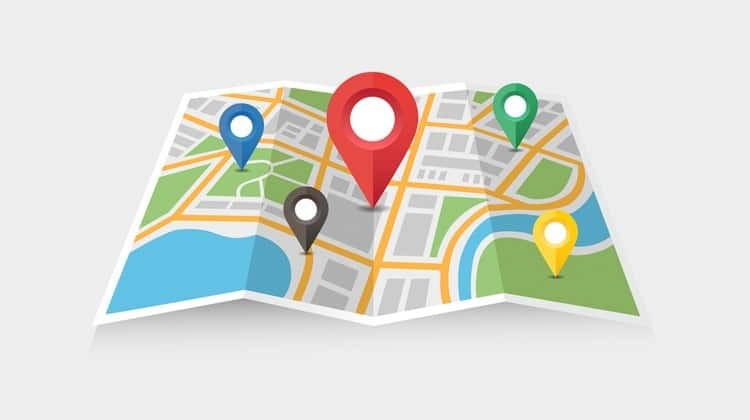Location, Location, Location! How to Use Geo-Targeting in Your PPC Campaigns
by Ana Gotter • October 23, 2018
The internet has connected us more thoroughly than ever before, revolutionizing how we can create and run our businesses. We’re no longer limited to the customers who are within a reasonable driving distance, if they happened to find an advertisement for our business somewhere.
Instead, we can sell far and wide, with SEO helping customers even in other countries find us quickly. This is a huge advantage for many ecommerce businesses.
But not all businesses, as it turns out.
Local plumbers can’t provide their services even three counties over (let alone three states over), and a juicy burger wouldn’t exactly hold up well in express shipping. Some businesses rely only on local customers. As a result, they’ll want their PPC campaigns only to appear in the feeds and searches of users who are within a set distance from their home b3ase.
That’s where geo-targeting comes in, allowing you to create PPC campaigns that will only be shown to users within certain geographic constraints. In this post, you’ll learn how to create geo-targeting campaigns for local customers on both Google AdWords and Facebook Ads, along with how to execute them for best results.
What Is Geo-Targeting and Why Does It Matter?
Applying geo-targeting—also known as location targeting—to your campaigns ensures that your ads will only be shown to users within a certain location. All PPC platforms allow you to utilize location targeting on your ads.
The location you choose can be expansive, like a state, region or country, or as narrow as a ten mile radius from your store. You can get as specific as you want.
For local businesses like a bakery or a mechanic, this can help you to show ads to users who are only near enough that they’d actually be able to turn into customers at some point.
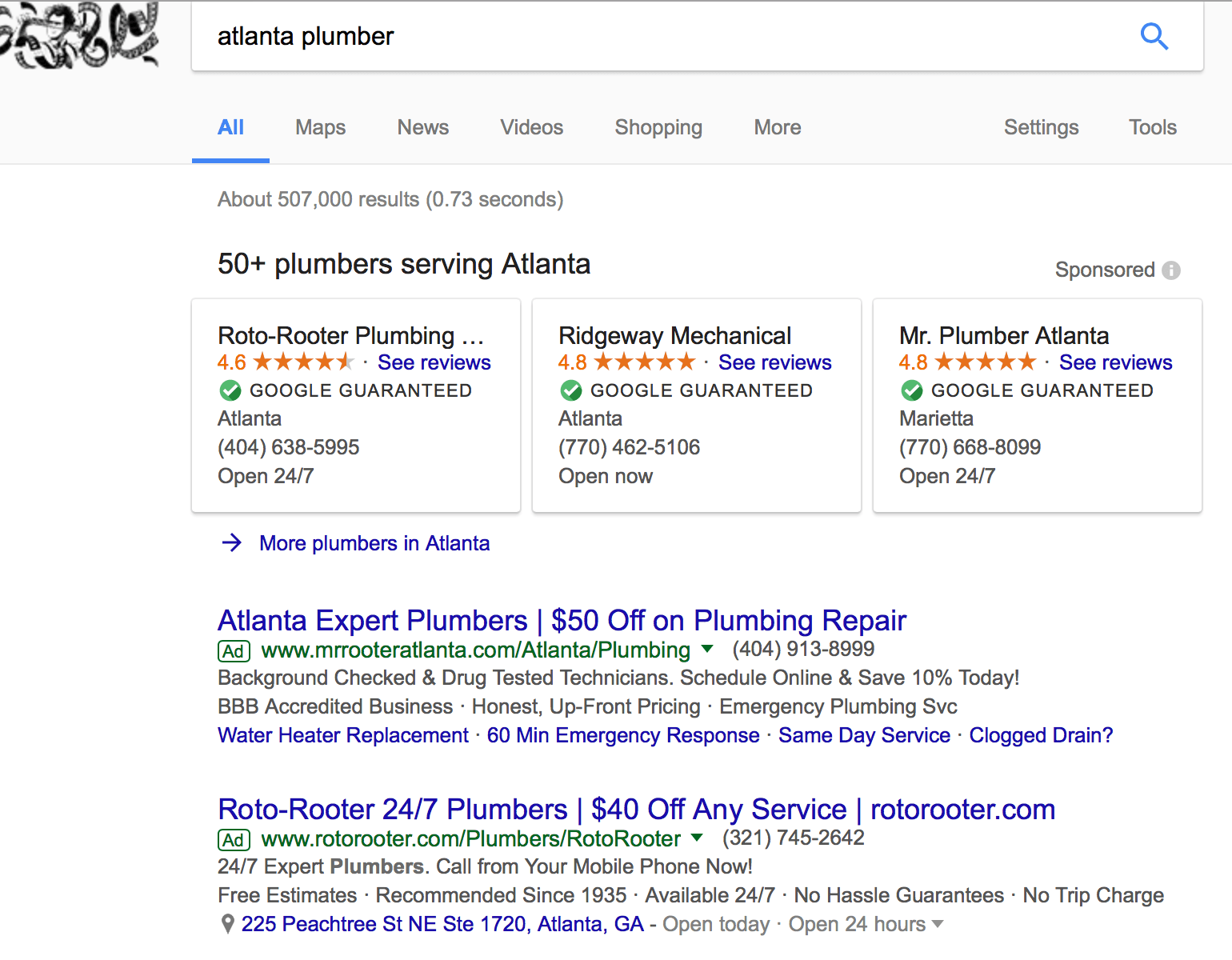
Large businesses with multiple branches and locations can also use this to their advantage, too; they can run segmented campaigns, adding the location into the copy of each ad to better appeal to users who are seeing the ad.
In some cases, businesses may notice than certain cities or regions have stronger responses for different products. A roofing company, for example, may have better response for solar panel roofs in more affluent areas where homeowners can afford it.
If you’re running location-specific offers, geo-targeting can save you the grief of a lot of angry customers. You can even choose to bid in placements in all cities in a state except one.
Imagine if the Instagram Ad below hadn’t used geo-targeting; there would have been a lot of hangry people who wanted their BOGO chicken biscuits.

How to Set Up Geo-Targeting in Google Adwords
You’ll establish geo-targeting in Google AdWords at the campaign setting. You can find the location settings underneath where you can establish the campaign name and which networks you want your ads to appear in.
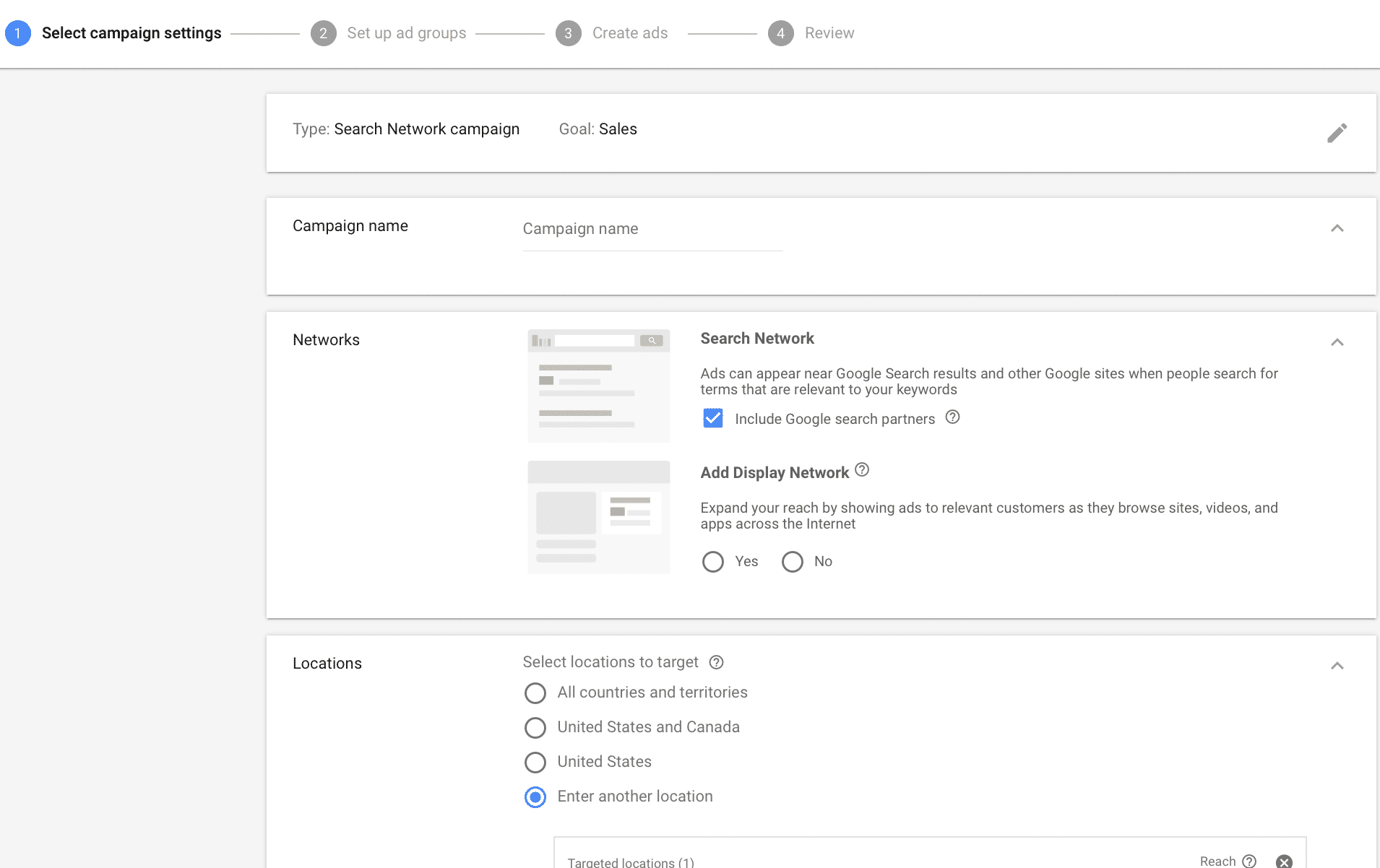
If you want to target locations on a more precisely than at a country level, select the “Enter another location” option. You can enter in cities, counties, zip codes, and states in the basic search option. After finding the right place, you can choose to either target that location or exclude it from your search.
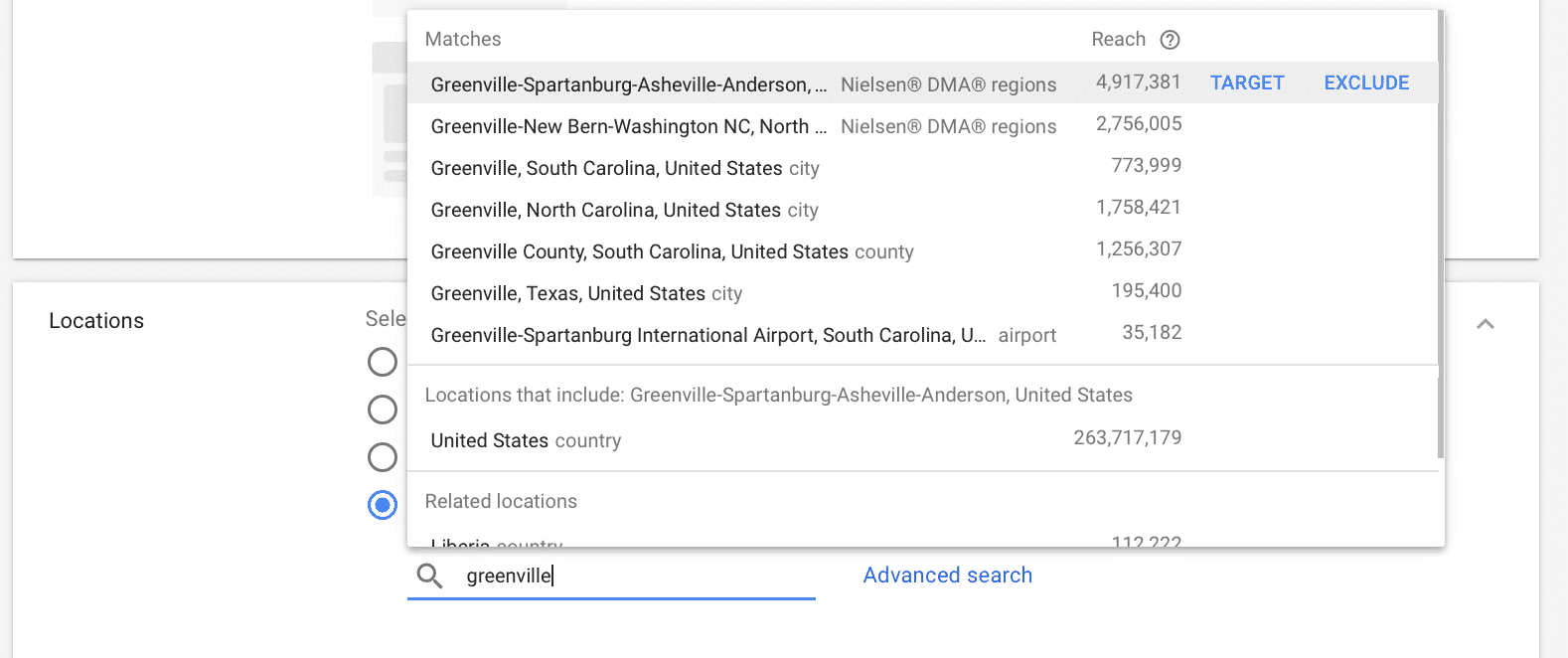
If you want to get really exact, you can do so by clicking the “Advanced search” button next to the search bar. When you do this, you can enter in a specific location by entering its’ name, address, or coordinates. Then, select a radius surrounding this location that will determine who your ad could be shown to.
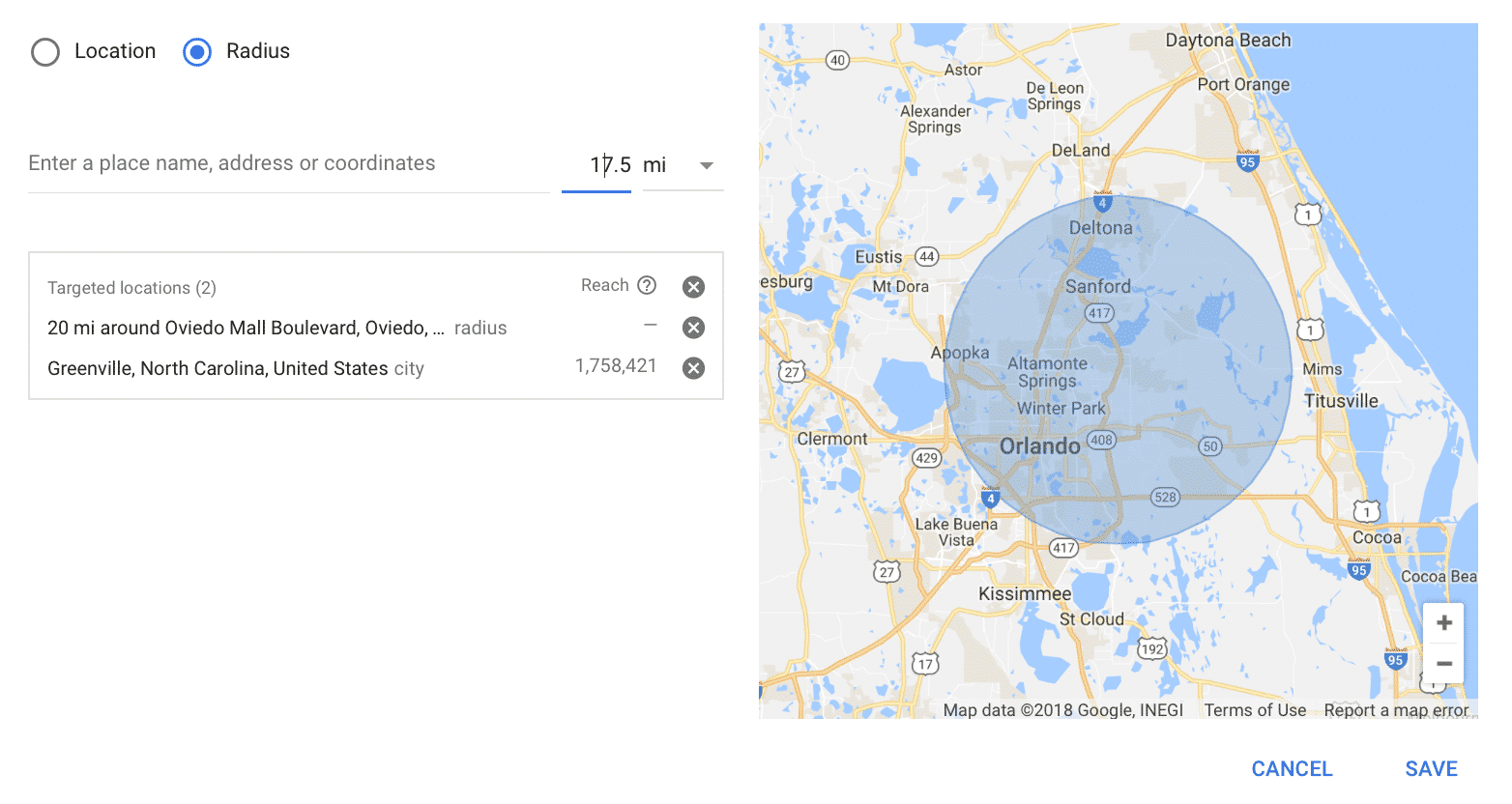 That’s all you have to do. Target or exclude as many specific locations as you desire.
That’s all you have to do. Target or exclude as many specific locations as you desire.
How to Utilize Geo-Targeting in Facebook Ads
Location targeting in Facebook Ads (and thus Instagram Ads) is exceptionally similar to Google Adwords. Here, geo-targeting happens at the ad set level when you’re creating the audience you want to target.
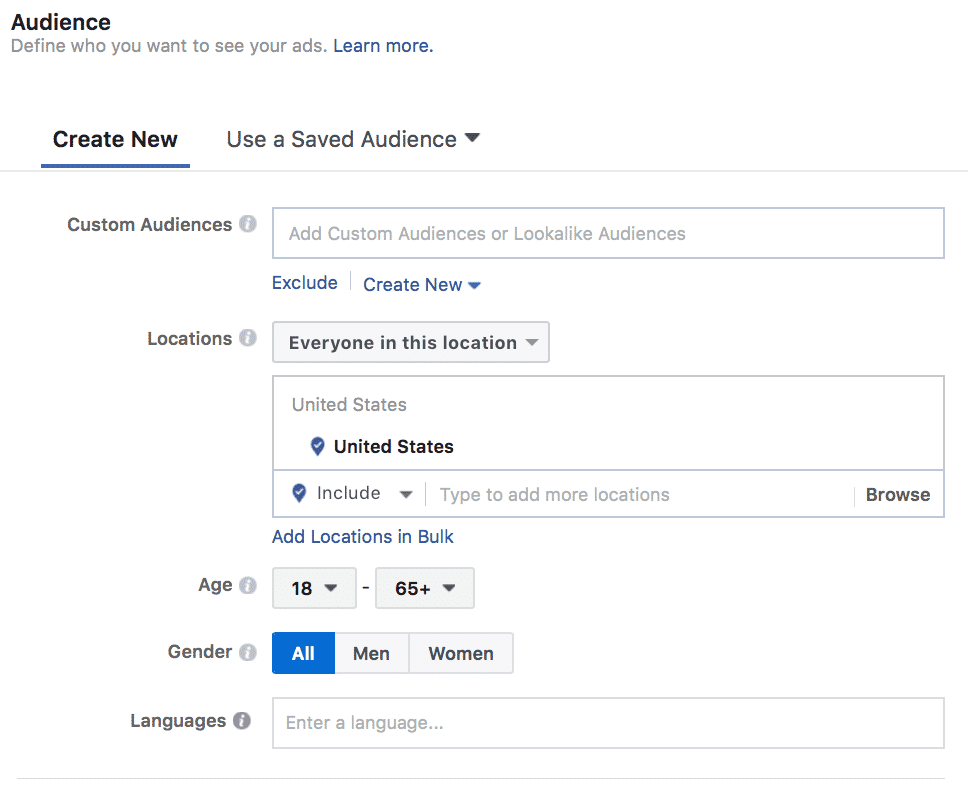
Facebook lets you get a little more precise than Google AdWords. In my opinion, they easily have the best geo-targeting capabilities across the board in terms of customization.
They even give you the capability to target individuals who are only in a set location in a specific way. You can target:
- Anyone in the selected locations
- People who live in the selected locations
- Users who were recently in the selected locations
- People traveling in the selected locations

Like Google AdWords, you can enter cities, states, zip codes, regions, counties, countries, and global regions as a location you want to target. You can also target people who have visited specific places, like a particular airport or a certain mall. If you can’t find a certain business, you can drop a pin on any location.
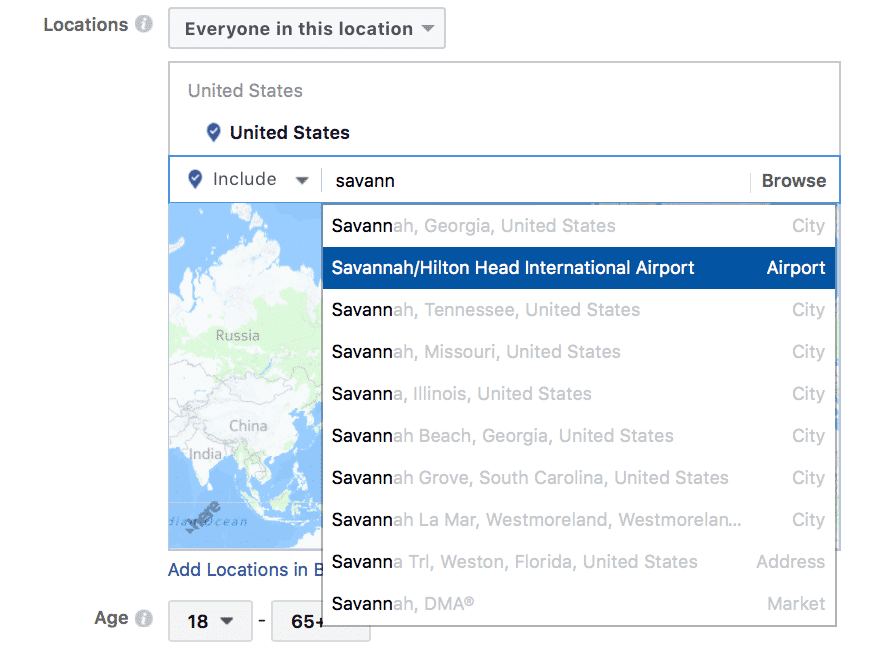 Once you’ve chosen a location to target, you can then set the radius for how far outside the region you want customers to be able to see your ad. You can also choose to target that area, or to exclude it from your targeting.
Once you’ve chosen a location to target, you can then set the radius for how far outside the region you want customers to be able to see your ad. You can also choose to target that area, or to exclude it from your targeting.
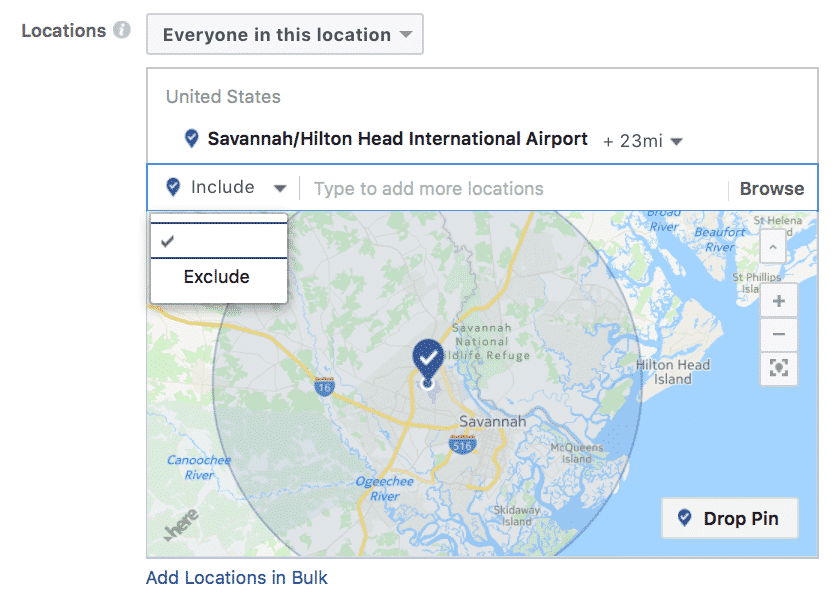
How To Get The Most Out of Your Geo-Targeting Campaigns
Geo-targeting in and of itself is a strong practice that can increase the performance of your ads, but there are strategies you can use to make your ads even more appealing to your target audience. These include:
- Test putting the location in the ad copy. If you’re a local business, there’s a chance that people want to find you locally. Who cares about a tire repair shop in Massachusetts if you’re in Denver? Because of this, putting the location in your ad copy can give you an edge. If necessary, run multiple campaigns with each specifying the individual location.<

- Double check your locations. I know, this sounds like amateur hour, but it’s shockingly easy to do. I’m so careful with my campaigns, and I’ve even made this mistake once- I clicked on the wrong “Greenville.” Fortunately, I caught it before the ad actually started running, but it was a close call.
- Think about what else is around you. Don’t just think about where you are; think about what’s around you. Are you a restaurant near a stadium or an airport? Encourage people to stop by after the big game, before that Ed Sheeran concert, or for a graduation celebration in your ad copy. If you’re a boutique fitness studio, advertise to people who are health-conscious and attending the farmer’s market nearby. Put these suggestions into your copy to increase in-store events.
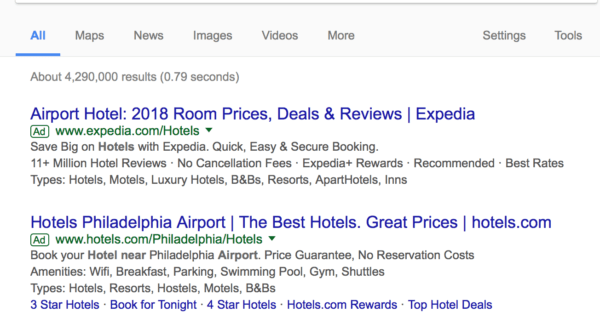
- You can bid more on high-value locations. Are you willing to spend more to show your ad to customers immediately inside Dallas, but still want to bid something on customers outside the city border? Create two different campaigns, and bid higher on the high value locations that are more likely to bring in revenue for your business.
Conclusion
Geo-targeting is an excellent way to ensure that your ad is only shown to those who have the ability to convert. This helps you significantly increase your ad’s relevancy, which will give you a boost in both CTR and return on ad spend as a result.
As you increase your geo-targeting on PPC platforms, test out different practices and copywriting strategies. This will show you what your audience responds to most. Split testing different ads amongst different locations can even be beneficial if you’re targeting multiple distinct areas and know that each audience is a little unique.
Struggling to decide what locations you should target for your business? Get in touch with us and see how we can help improve your geo-targeting campaigns.
What do you think? Do you use geo-targeting for your business? How do you make sure your local campaigns are a success? Share your thoughts, knowledge, and questions in the comments below!

